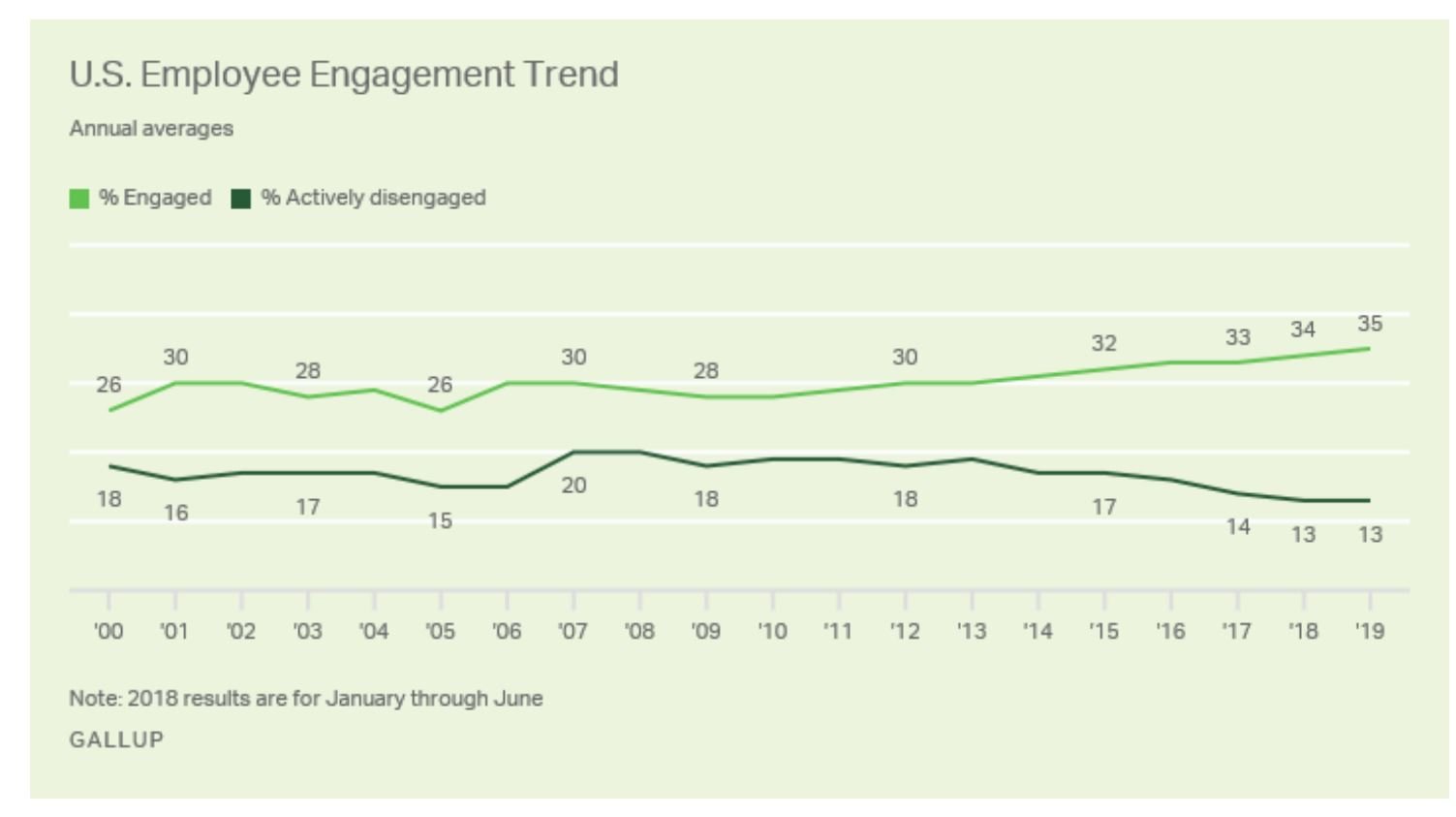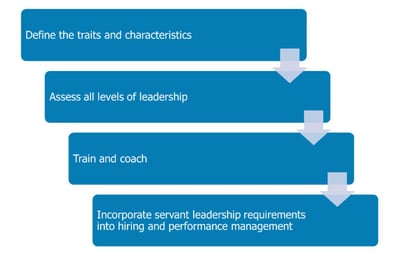
"I hate my job!"
How many people at one time or another in their lifetime have felt this way? How many people have come home and told someone this? Let me answer that for you...Everyone! Johnny Paycheck sang about it. He had a #1 country song in 1977 titled, “Take This Job and Shove it.”
People often think the only good job out there is the one they left and the one they’re going to. It's never the one they’re currently doing.
Why is This?
Do people always feel like this or is it just a bad day? Is every day at work always supposed to be cake and ice cream? Is it me or is my supervisor an evil maniac?
There are a number of reasons why people may “hate” their jobs. There is a broad range on the severity of hate. On the lowest spectrum, it could just be a bad day. But, on the highest it could be about the 2011 film, Horrible Bosses.
What I am really talking about is disengagement. Like the severity of hate, there are also different levels of disengagement. Below is the latest Gallup survey. 35% of employees are engaged while 13% are actively disengaged. This is a positive trend over the past few years. However, the other 52% are classified as not engaged and that trend has not improved. According to Gallup, the not engaged show up for work and do the minimum. They are not excited or passionate about their jobs. In summary, this means that 65% of employees are not engaged (source: gallup.com).
As mentioned earlier, there are a number of reasons for this. I am going to focus on two of them.
#1 - People don’t like or respect their immediate supervisor
For most employees, their perception of the reputation and culture of the organization is based on what they think of the person they report to. I have experienced this first hand. I worked for a fantastic company and the employees I were responsible for were outstanding. However, I had a terrible supervisor…I left.
Step 1 of the Get in the Game 10 steps of implementation is to Begin with the Right Leadership. In other words, stop everything you are trying to implement if the current leadership you have in place does not possess such traits as:
- vulnerability
- humility
- servant leadership
- courage
Especially when it pertains to the culture of your organization.
I am not just talking about executive or middle management. I am talking about all levels of leadership. I could make an argument that the most forgotten but most important level of leadership are frontline leaders. These are the office managers, production/operation supervisors, dispatchers, retail managers,
etc.
One bad leader can wreck an organization. I have seen examples of this on several occasions. How many times have you heard from leadership or business owners that their employees don’t care? They have poor attendance. They don’t act like owners. They have poor customer service skills. They don’t listen to their supervisor. Here is my favorite excuse, “…it’s the millennials.” The list goes on. What does the employer do to improve employee retention? They reprimand and/or fire the employees. The good employees already left.
Turnover is high. Customer service suffers. Revenue suffers. Net Income suffers. Meanwhile, the one bad leader is still there.
In my career, 90% of the time the problem is the leader. Yet, organizations always want to blame it on the employees.
What to do about it
Can all of this be fixed? Of course, it can. How? Servant Leadership!
In my book, Building A Resilient ESOP Company, I define servant leadership as:
…a bottom-up approach, rather than top-down control and command. It is both leadership and employees working hand-in-hand to accomplish organizational objectives.
There are key traits and characteristics that all servant leaders have. The 5 behavioral traits are:
- Humility
- Respectfulness
- Authenticity
- Honesty
- Empathy
Some characteristics include:
- You teach, coach, and mentor
- You help remove obstacles to success
- You are transparent
- You know your strengths and weaknesses
- You ask the question, “What do you think?”
This is a process that all organizations can start today if they are serious about incorporating servant leadership. There are 4 steps that are listed in the diagram and should be done in order. It is very, very important that this is done across all levels of leadership. Meet with all current leaders. Identify any gaps they have and give them the training and the opportunity to change. Finally, if they don’t change, have the courage to address the problem.

#2 - People don’t know how they make an impact
Everyone works to make money. We have to ensure that our basic needs are covered and hope that there is a little more leftover. However, the motivational factor of money is short lived and never completely satisfies. It’s that item that draws your attention for a short period of time then quickly fades. It’s like a sugar rush. There is an initial high that sugar brings you and then you crash. When that crash is over, you will want more sugar. Always wanting more. Never completely satisfied. Now, I’m
overweight! Money never completely satisfies.
People want to know how they make a difference. Think about this:
- How does my job affect the organization? How does that in turn affect me?
- What number do I influence on the financial statements? How does that in turn affect me?
- How does my job affect the customer? How does that in turn affect me?
- How does my job affect my community or society? How does that in turn affect me?
Wow! If every person knew and understood these questions would they feel different about their job?
What to do about it
Open the Books and Teach the Numbers.
Use the 3-step method: Share the financials, Teach the financials, and Teach each employee how they affect the financials.
Step 1 | Share the financials
Being transparent with information has to happen. People need access to the data. You don’t need to share items such as wages and other confidential employee information. However, all employees need to know how they and the organization are performing. That performance is measured by the numbers on the income statement, balance sheet, and cash flow statement.
Don’t stop here. Move to step 2. If you do stop here, you are just reporting and it won’t work.
Step 2 | Teach the financials
Everyone in your organization should attend a financial literacy class. This class should be based on something similar to your industry or business. I understand that just saying “financial literacy” to most people will cause them to run away but there should be no fear. Learning the basics of financial statements is actually very simple. No linear progression models or algebra needed! This doesn’t mean you are wanting all of your employees to be CPA’s. They just need a basic understanding of what the
numbers are and how they affect each other.
Don’t stop here. Move to step 3. If you stop here, it won’t work.
Step 3 | Teach each employee how they affect the financials
This is the most important step. Teach each employee how what they do as individuals affect those lines and numbers on the financial statements.
Have you ever thought where all those numbers, and percentages, and line items come from on the balance sheet or income statement? I have asked employees at organizations that did share and teach the financials this very question. Not one single person said, “It comes from me!” The replies range from the executives in the ivory tower, the bean counters, finance, customers, the computer, Amazon, the stock market, etc.
Every single number on every financial statement has a face. That face is the employees of the organization. That’s where the numbers come from.
Once you connect each individual with what they do and the numbers on the financial statements, they will have a better understanding of how they fit in and how they make a difference.
Summary
I will wrap all of this up with one statement. People don’t wake up every day and say, “I am going to be the worst employee ever today!” People want to have meaning and purpose. People want to do a good job.
.png)








.png)




-5.png)
.png)
